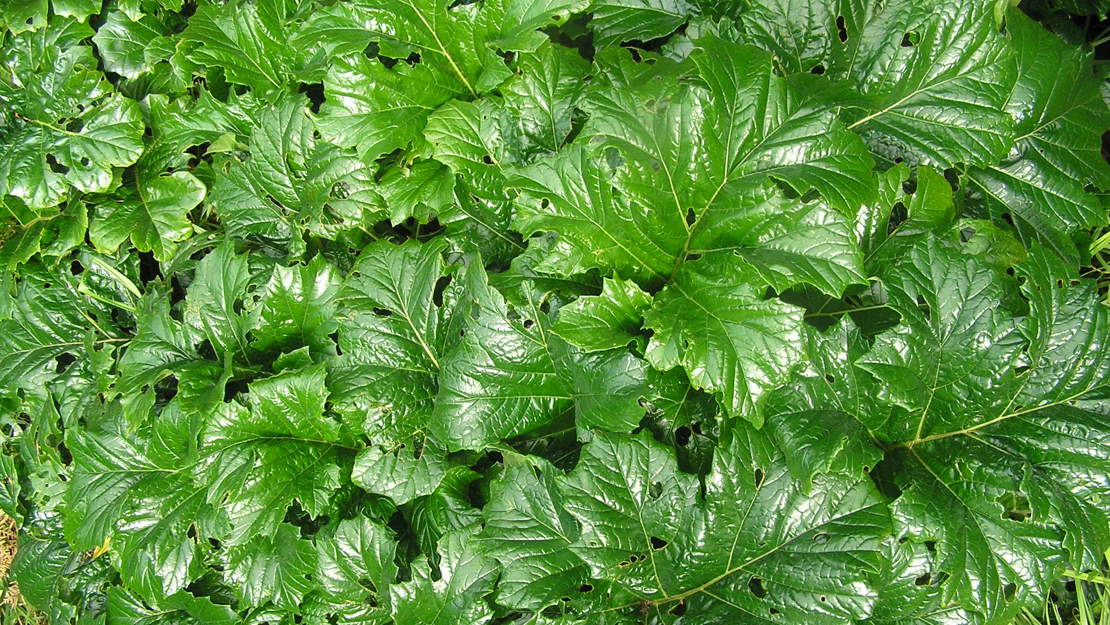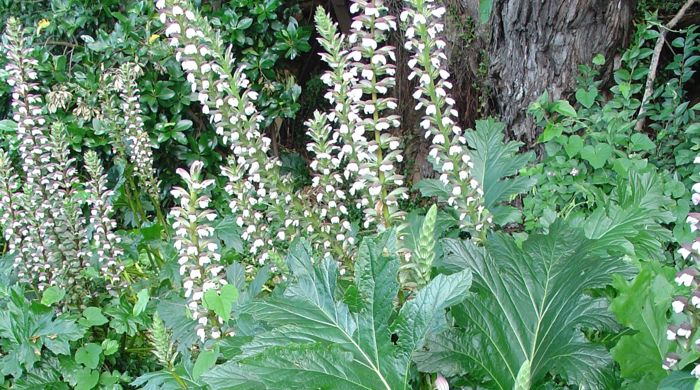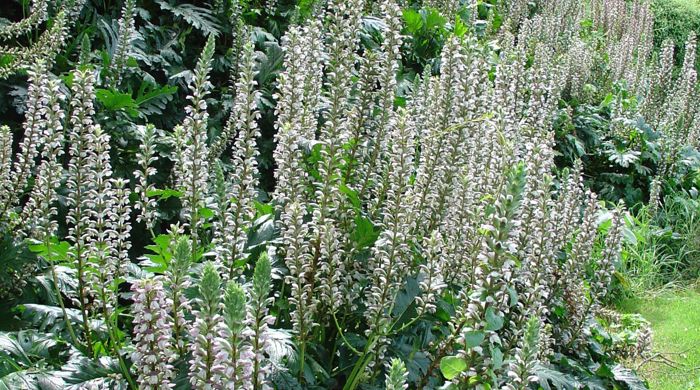Acanthus mollis
Bear's breeches
Also known as:
Bear's foot
Family: Acanthaceae
Origin: Europe, North Africa

Regional Pest Management Plan (RPMP) status
- Not a legally declared pest
General description
Perennial herb < 120 cm tall. Roots are thick. Leaves are large, multi-lobed, shiny and borne on < 50 cm petioles from the root crown or < 2 cm petioles from the stem.
Flowers are white with pink/purple/brown veins and borne on a central spike in October-April. Seed capsules are 3-4 cm long, beaked and contain one flattened seed.
What you need to know
Although bear’s breeches is not a legally declared pest plant, it may still be invasive in some situations. Consider lower risk alternatives for your garden, such as native plants.
Habitats
Coastal areas, disturbed forest, riparian margins, wasteland, urban areas, roadsides.
Dispersal
Seeds dispersed by gravity and water. Vegetative spread from root fragments. Human-mediated dispersal through dumping of garden waste.
Impact on environment
Can form dense infestations and outcompete native plants. Allelopathic.
Control
Site Management
Follow up treated areas 3 times per year. Encourage natural regeneration of native plants or replant treated areas where possible after 2-3 treatments to establish dense ground cover and minimise reinvasion.
Recommended approaches
Physical control
Method: Dig out.
Plant parts requiring disposal: Seeds and roots.
Disposal options: Remove to greenwaste or landfill.
Biocontrol
Biocontrol is currently not available for this species.
Community agrichemical control recommendations
No qualifications: Cut stump and paste freshly cut base of stems with metsulfuron gel.
Basic Growsafe certified: Foliar spray with 5g metsulfuron-methyl per 10L of water.
Caution: When using any herbicide or pesticide please read the label thoroughly to ensure that all instructions and safety requirements are followed.





